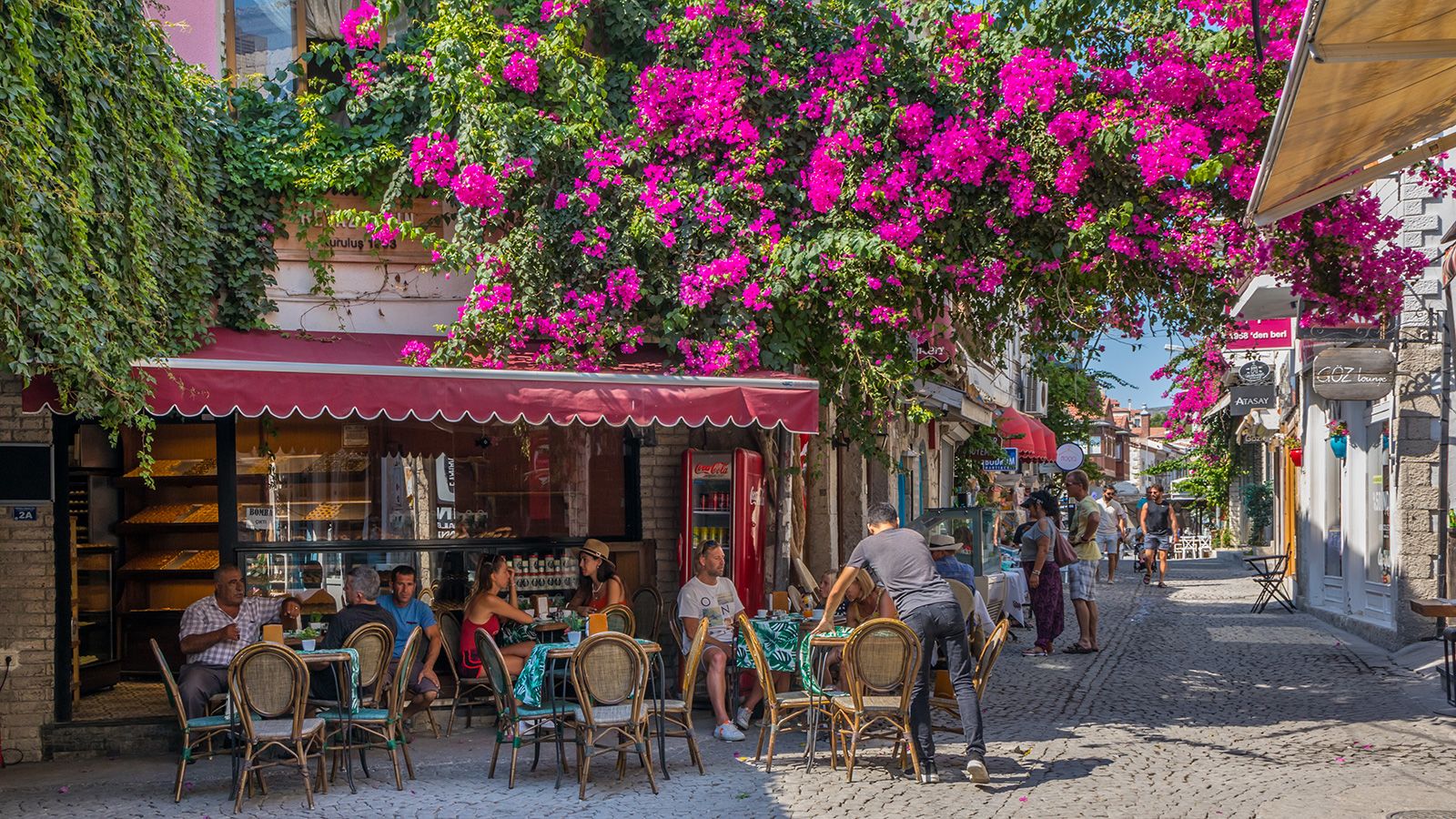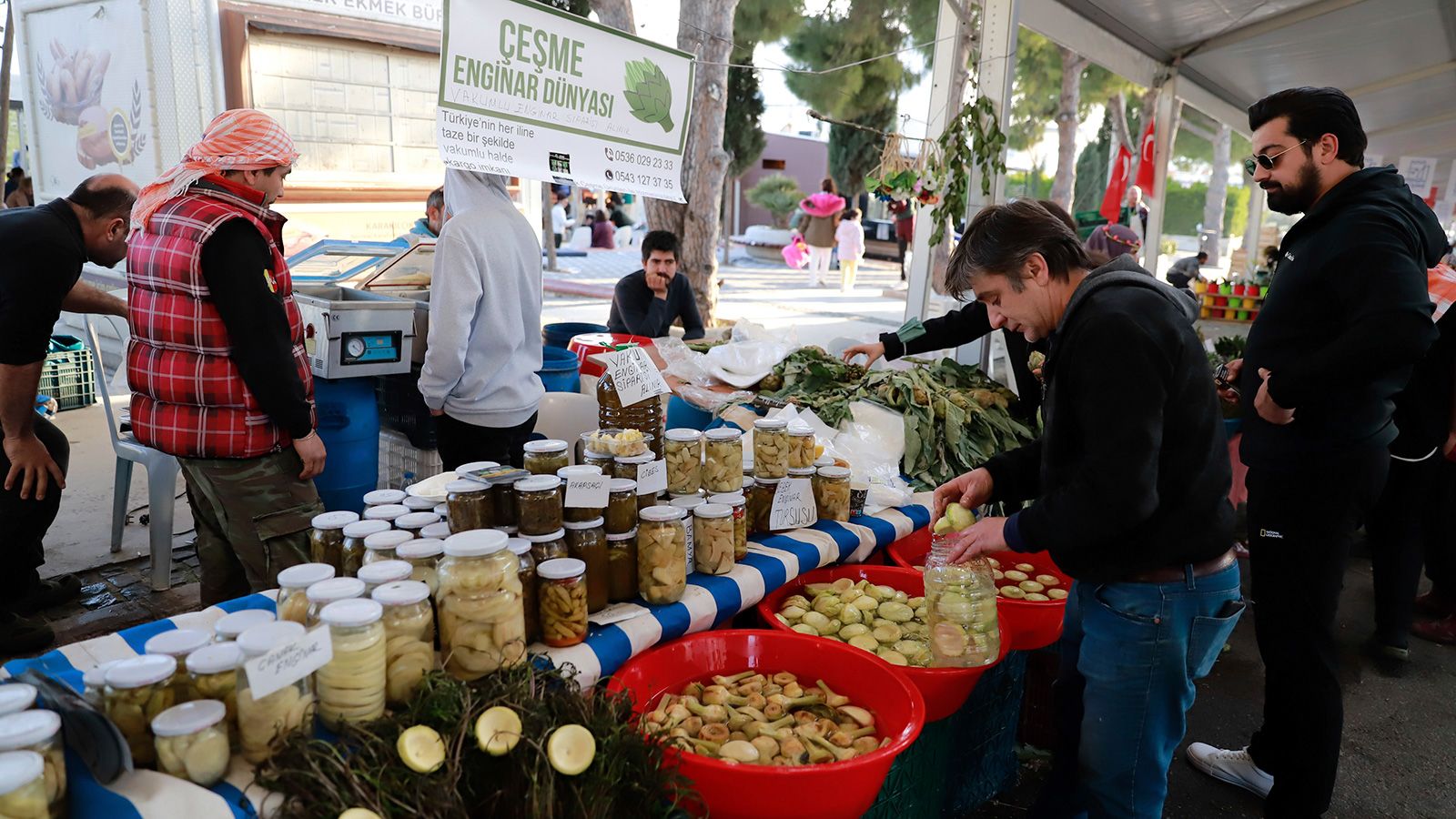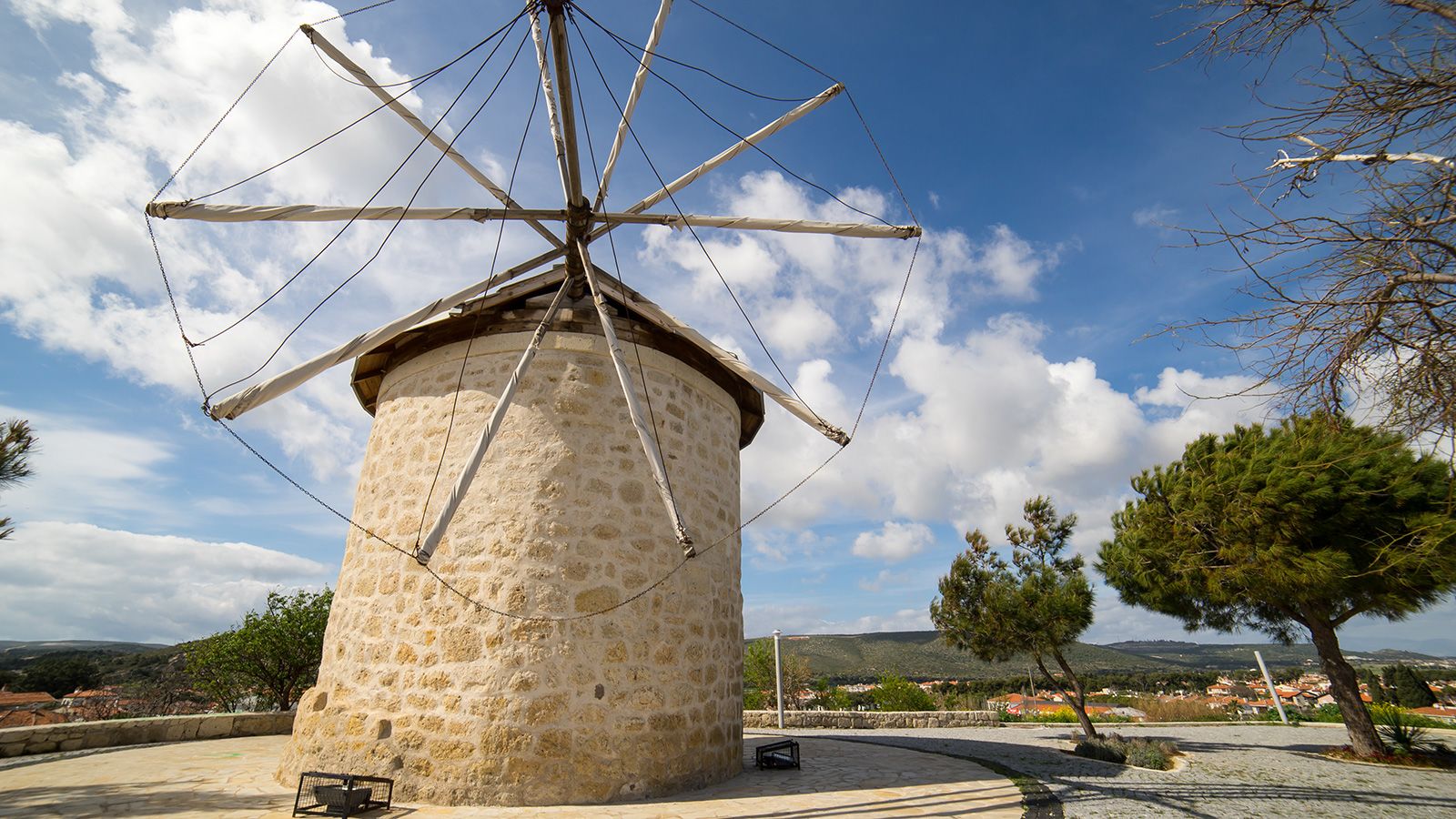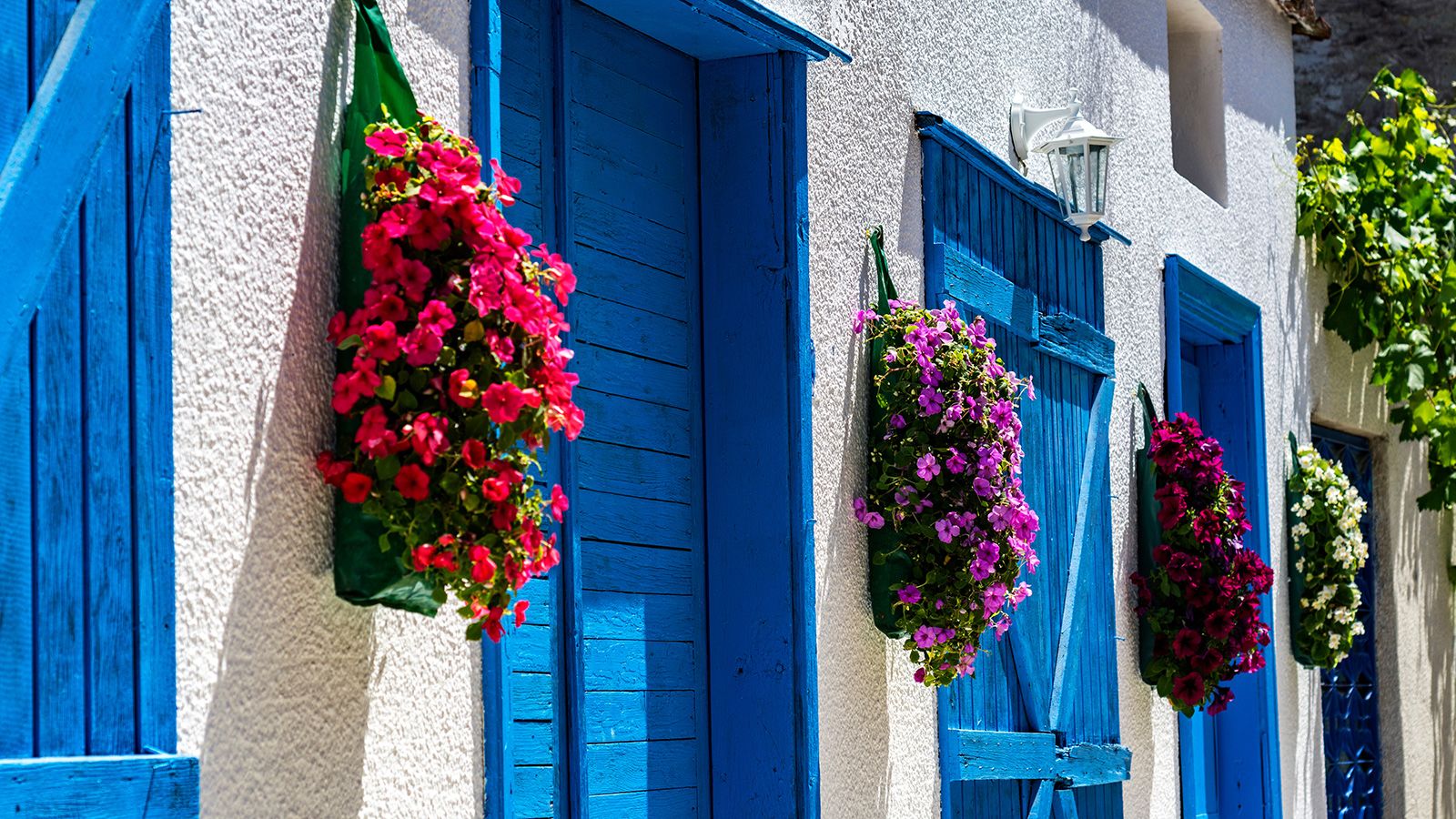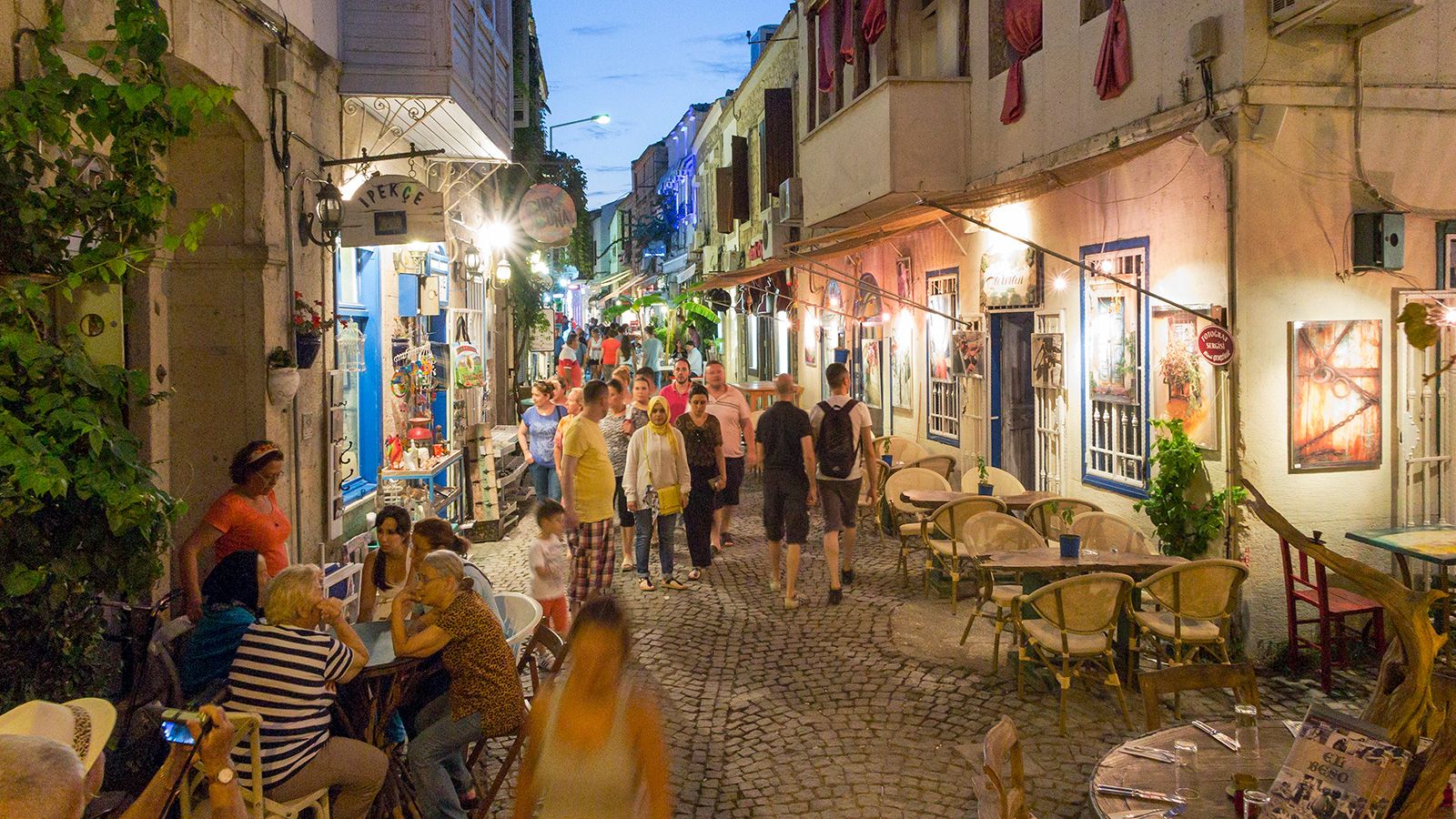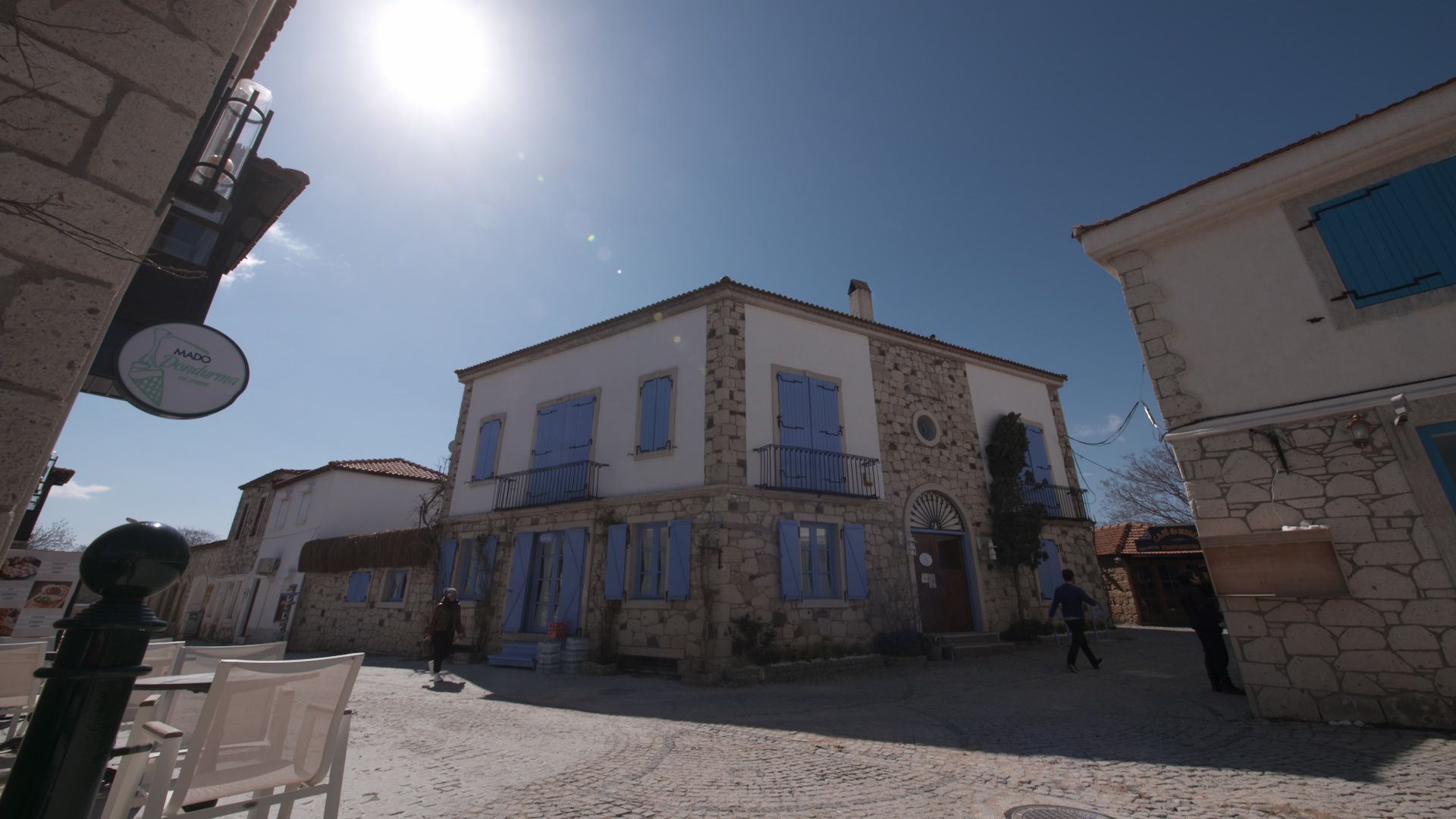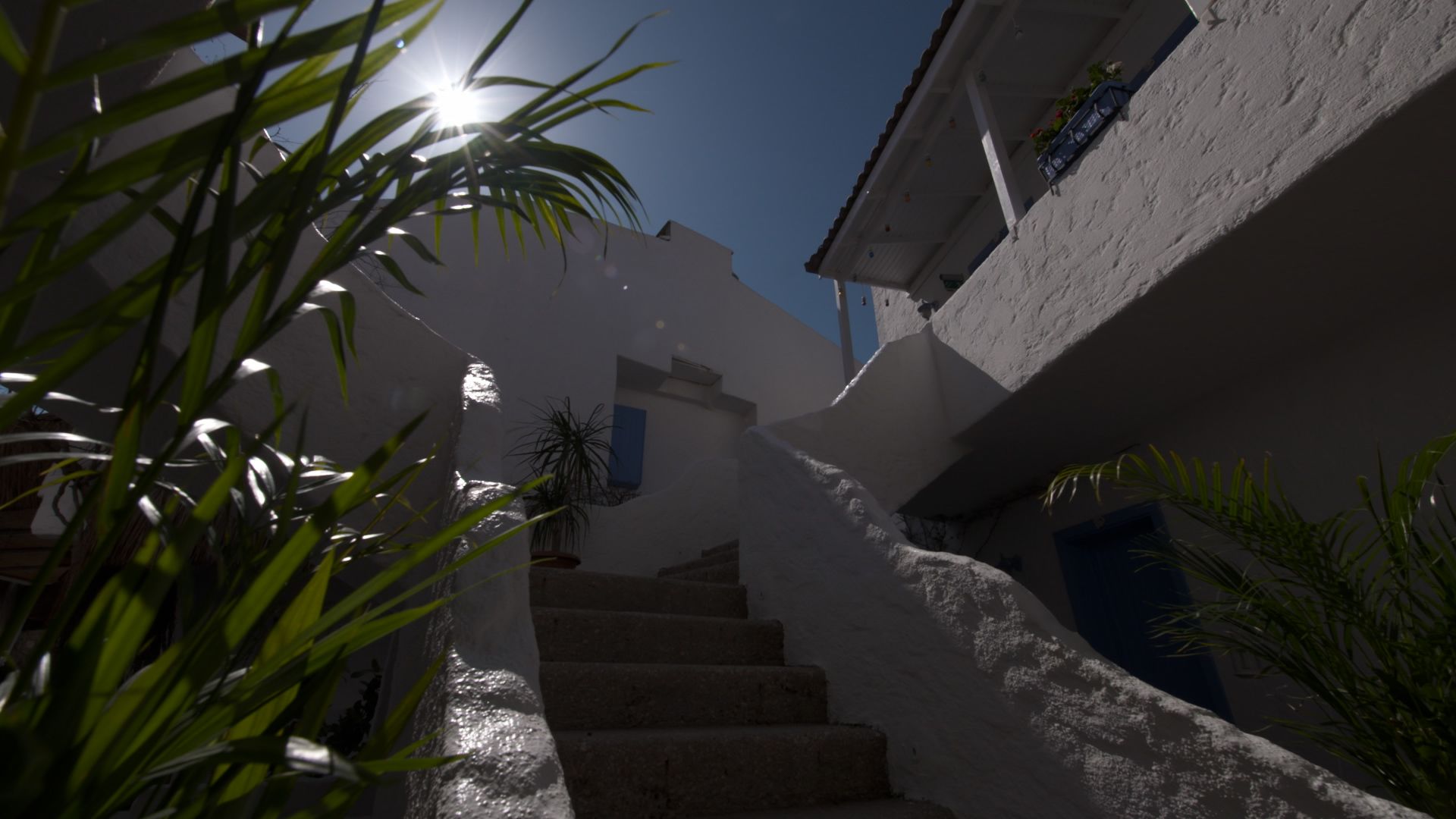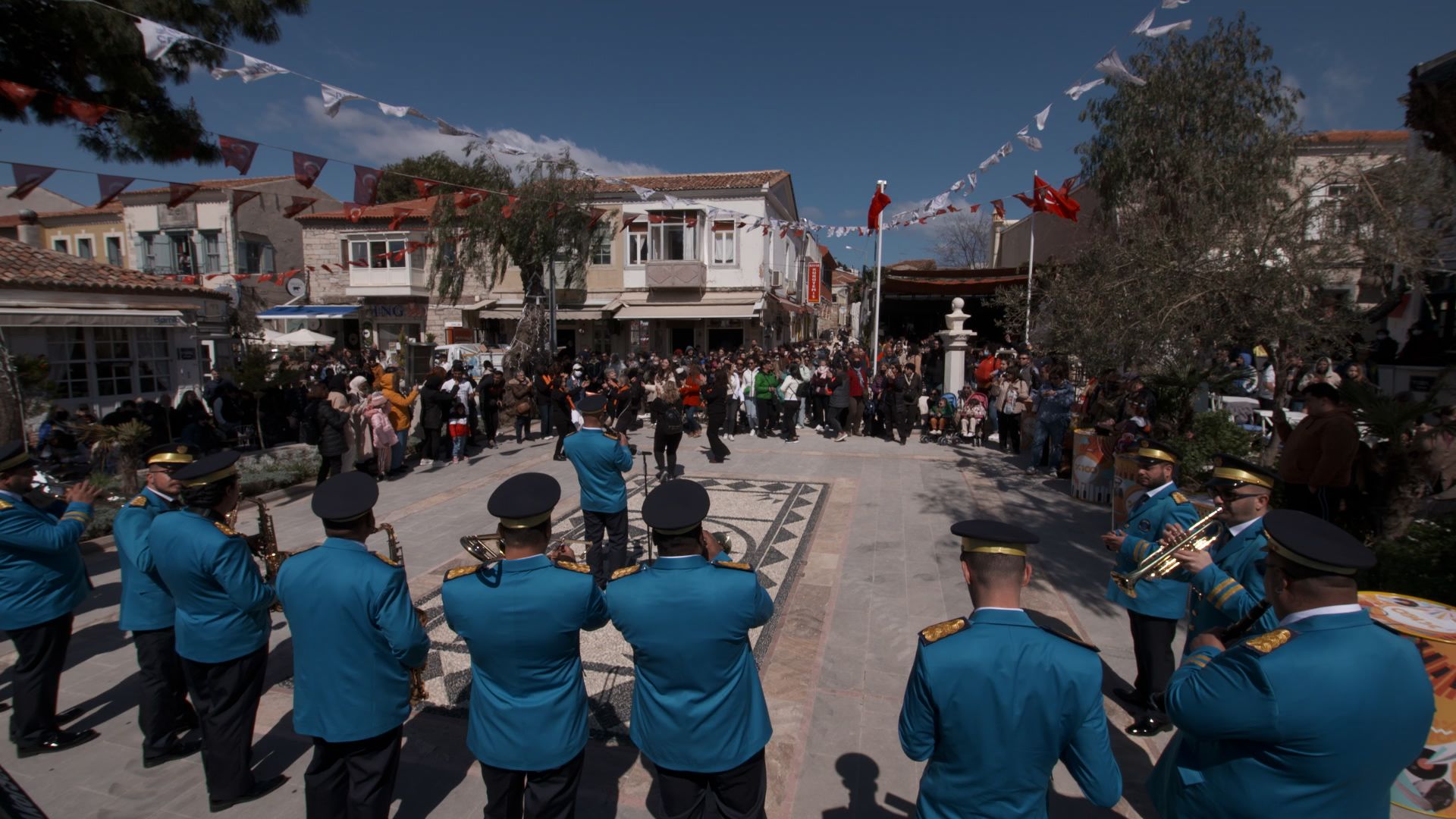A brass band fills the air with lively Turkish music as it marches down a cobblestone street. Tourists and locals alike clap and dance, packing the main square.
The musicians are dressed in turquoise uniforms with gold epaulettes – colors that match the azure-blue of the Aegean waters of Alaçatı, located on the Cesme peninsula in western Turkey (or Türkiye).
With its rustic stone houses with vibrantly painted wooden doors, winding streets filled with upscale restaurants, modern art galleries and boutique stores, Alaçatı has all the hallmarks of a typical Mediterranean town, albeit with an effortless Turkish charm.
Turkish holidaymakers have been flocking to this picturesque destination, situated about an hour’s drive southwest from Izmir, since a revival took place in the early 2000s. But international visitors are just playing catch up.
Everywhere you turn, people are sipping on Turkish tea in the town’s open-air cafes, taking in the fresh air and sunshine.
Colorful town
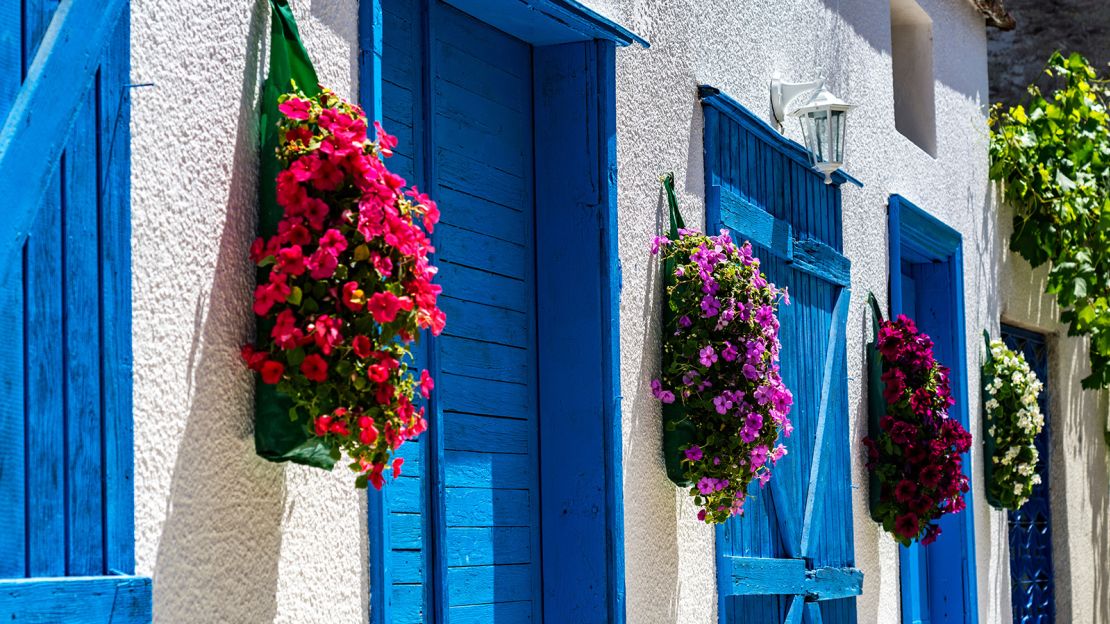
And it’s not just holidaymakers who’ve been won over – windsurfers have also become a fixture here due to the strong, year-round winds of the nearby bay, making Alaçatı the self-proclaimed windsurfing capital of Turkey.
“The air that you breathe here is precious,” says Perihan Akbulut, who runs the Kurabiye Hotel, which is a few minutes walk from the stunning Kurabiye Stone House.
“There is always a breeze that makes you feel better – even if it is so hot during summer months.”
Kurabiye Hotel could easily be confused with a boutique Aegean guest house thanks to its whitewashed walls and blue doors.
Akbulut moved here from Istanbul in 2009 and opened the hotel, which has a courtyard adorned with a lemon garden at its center, the following year.
She and her husband now live between the two destinations – enjoying big city life during the winter and retreating to the pretty town for the summer season.
“It is so easy – or let’s say simple – to organize your life, here in Alaçatı,” she adds.
“But that’s exactly why it appeals to me; it’s a place where you don’t have to think too much about what to do and where to go.”
Premier produce
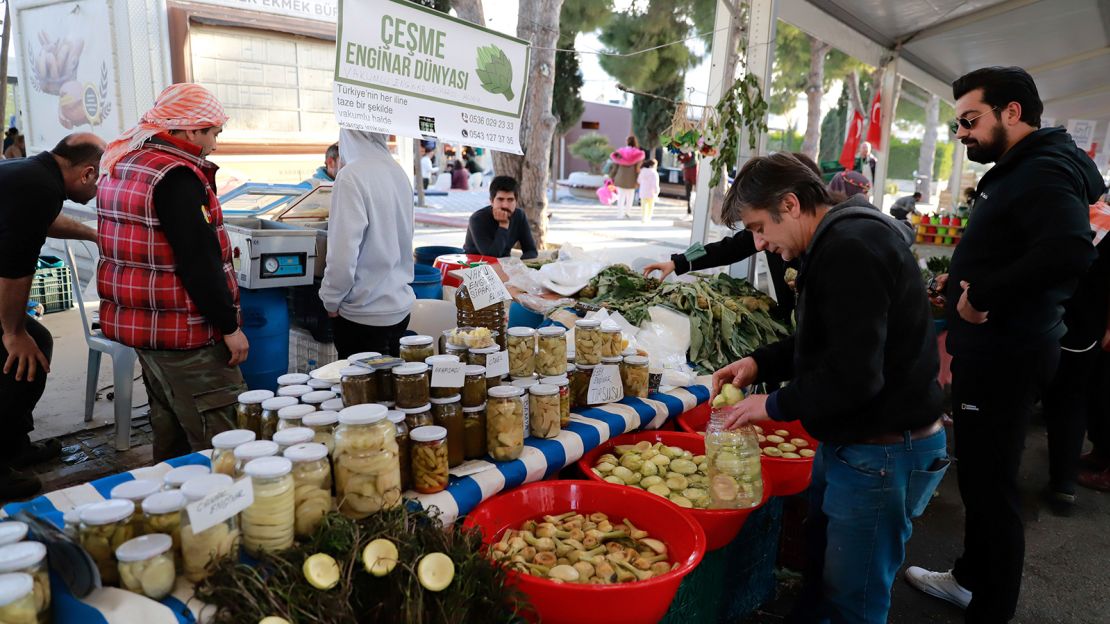
Alaçatı has been through many reinventions over the years. It was mostly swampland up until the mid-19th century, when authorities had it drained to rid the area of marshes that bred malaria-causing mosquitoes.
Greek workers from nearby islands settled here to farm the vineyards and olive groves, and the region continues to be the premier wine-making and olive-oil producing region in Turkey.
Like other towns in the area, Alaçatı was largely abandoned in the 1920s, after Turkey and Greece engaged in a religion-based population exchange. Many of its stone houses lay discarded for decades and fell into disrepair.
But it has experienced a sea change of sorts in the last 20 years. Eagle-eyed visitors from across the country spotted an opportunity to buy holiday homes here, breathing new life into the town.
Locals often boast about the region’s produce and artisanal food, and on Saturday’s, market stalls heaving with fruit and vegetables, fresh bread, and seafood line the town’s main artery, Kemalpaşa Street and extend up numerous side streets.
Each spring, the Alaçatı Herb Festival, an annual event showcasing the natural herbs that grow in Alaçatı and the nearby coastal town of Çesme, attracts hordes of visitors to the area.
“Everything is so reachable,” adds Akbulut. “Delicious food, fresh vegetables and fruit, natural herbs and seafood.
“It is a good combination of local people and new settlers. You can never feel lonely here.”
‘Heaven on Earth’

This region of the eastern Mediterranean is steeped with history. The ancient ruins of Ephesus, a UNESCO World Heritage Site, can be found just an hour’s drive to the south of Alacatı.
Based near the Aegean Sea and modern-day Selçuk, it remains one of Christianity’s most revered sites and is home to some of Turkey’s best archaeological wonders including the Temple of Hadrian, built in honor of Roman Emperor Hadrian.
Meanwhile, the thermal pools of Pamukkale, which literally translates to “cotton castle” and can be mistaken for a cluster of angelic clouds if viewed at the right angle, are just a few hours away by car.
Tourists have been coming to this popular site of ancient travertines, another UNESCO World Heritage Site, for centuries.
The well-preserved ruins of the Hierapolis ancient city, once a healing center, are among its highlights, along with the Pamukkale Antique Pool, also known as Cleopatra’s Pool, where Egyptian Queen Cleopatra is believed to have once swam.
And for those who’d rather stay closer to town, a trip to the hot thermal springs of Ilica beach, where the water remains shallow for the first 100 meters or so from shore, will not disappoint.
“We call this place ‘Heaven on Earth’,” Çesme Mayor Ekrem Oran tells CNN while admiring the herbs at Alaçatı’s Saturday market.
Judging from the faces of those around, you’d be hard-pressed to find anyone who’d disagree with this sentiment.
